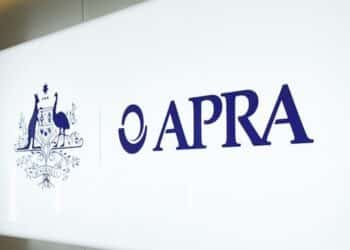While APRA and ASIC are able to provide guidance, the “ultimate responsibility” for member outcomes lies with boards and trustees – and the regulators want them to start stepping up to the plate.
“The coming period carries a great deal of uncertainty, including how long the health and economic impacts of the virus will endure,” APRA and ASIC wrote in a joint letter to superannuation trustees.
“The primary impacts of COVID-19 are likely to be short term, however superannuation is a long-term proposition. Australia’s 16 million members of APRA-regulated superannuation funds are relying on trustees’ nous, dedication and preparedness to appropriately safeguard their savings through this difficult time.”
Trustees need to be undertaking detailed liquidity stress testing with scenarios that reflect changes in “future net cash flows of the RSE, member behaviour and market conditions” as well as identifying specific areas for heightened attention – including increased member switching or deterioration in the liquidity profile of their investments.
They also need to keep their eyes peeled for scams.
“A range of possible scams, such as fraud and phishing, could emerge from these unsettled market conditions and member misunderstandings concerning the early release of superannuation initiative,” the regulators wrote.
“The changed operating environments within organisations may also leave funds and their members more exposed to cyber risk. Trustees are advised to be even more vigilant about their members’ interests and promptly share intelligence with the regulators.”
The early release super scheme has already proven controversial in some quarters, with senator Jane Hume warning trustees that super is not a “sacred cow”, while Australian Institute of Superannuation Trustees chief executive Eva Scheerlinck said accessing super now would only “crystallise losses”.
“One of the primary areas of regulatory focus over recent weeks has been monitoring liquidity to ensure funds retain the means to fulfil their payment obligations, including the early release of superannuation payments recently announced by the government,” the regulators wrote.
“This must necessarily also be a top priority for trustees, who bear ultimate responsibility for maintaining sufficient levels of liquidity to sustain the operation of their funds.”




I must admit I am enjoying watching these Industry funds squealing like stuck pigs, begging for money from the Government to prevent a firesale of illiquid assets, and this is only due to the Government’s measly $20K early super release! I can imagine far worse scenarios. If the fear of losses in these funds intensifies and goes viral (sorry for the pun, but I couldn’t help myself), the no’s switching to cash or bailing from these funds will go through the roof and they will have a much bigger problem on their hands. Are the chickens coming home to roost?
Three points:
1. It makes me sick that people like you “enjoy watching Industry funds squeal like stuck pigs”. No doubt you were part of the crowd saying the RC was a setup and the banks did nothing wrong.
2. Can you please provide evidence of where the Industry funds have been begging the Government for money….and I don’t mean articles written by people hoping this is the case.
3. Do you actually have any idea what percentage of the assets held by Industry funds are illiquid? Hint, it is so much smaller than what you think.
1. I am no fan of the banks
2. There has been several articles, across multiple newspapers with quotes from reputable sources
3. If you know the exact percentage of illiquid assets, please enlighten us. While you are at it, please tell us what percentage of shares are lent to short-sellers so they can devalue member assets and cause members anxiety, not to mention the counter-party risk they are exposed to. Please also tell us what percentage of members are excluded from insurance payouts due to tricky pandemic clauses, and don’t blame the insurance company, the fund chooses the insurance they sell to members.I’d also be interested to know exactly what portion of ‘cash’, as described in asset allocations, is genuinely cash held in a bank account. Just curious.